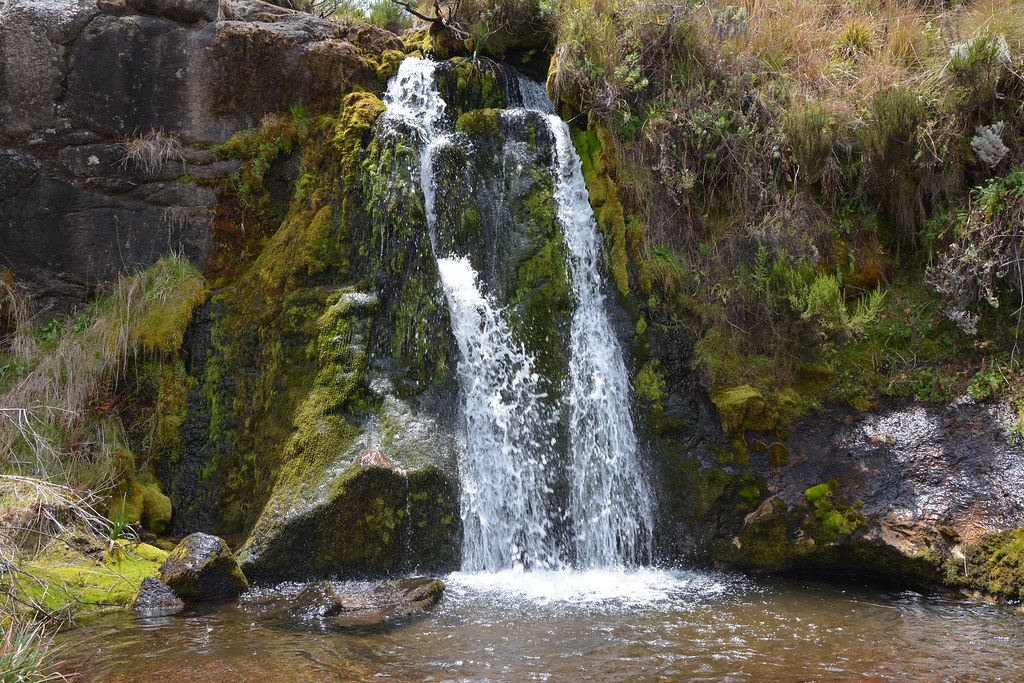Kitulo National Park (The Gods’ Garden)
The history of the park goes back to 1870, when Fredrick Elton, an Explorer visited the area. In 1960’s a large area was taken by United Nations Food and Agriculture Organization for Wheat and Sheep Schemes. Since neither wheat nor sheep thrived in the area, in 1972 the area was turned to a diary farm, which remains active to date.
As a result of concerns from conservation bodies and various stakeholders, part of the farm, Livingstone and Nhumbe Forest Reserves were declared as Kitulo National Park on 16th of September 2005.
The Park has vast expanses of rolling upland grassland, rounded hills stretching away to the horizon, waterfalls, rivers and crater lake.
Kitulo Plateau. The plateau is characterized by three main vegetation types:
Well drained grassland on volcanic soils with species like Aster transaniesis, Kniphofia Grantii and other more.
Seasonally or permanently in undated bogs with species such as Lobelia and Gladiolus.
Rocky ridges and associated talus slopes on soil derived from metamorphic rocks with species like Moraea callista and Romulea companuloides.
Flowers. The park is one of the great flowers gardens of the world with over 40 species of ground orchids alone. Flowers come out in their thousands making unparalleled carpet of color especially from late November to April.
Physical Features and Vegetation
Kitulo National Park is floristically reached with at least 350 species of vascular plants documented so far from the plateau. Kitulo highlands appear to be a major geographical ground for species typical of Eastern and Southern Africa region and so extremely rich in endemic and rare species not protected elsewhere in Tanzania.
Mount Livingstone Forest
Some of the tree species in the forest are Hagenia abyssinica, Ocotea usambarensis, Juniperus procera, and Khaya anthoceca. The forest is also characterised by mountain Bamboo, (Sinarundinaria alpina). Kitulo is rich in flora species with 350 species of high plants recorded, including 45 species terrestrial Orchids, of which 31 species are endemic to Tanzania, 16 are endemic to Kitulo and Poroto Mountain sand at least 3 species are endemic to Kitulo national park. Two species are only known to be in Kitulo and adjoining forest. The abundance of plants in the wet season has been described as the greatest flora marvel of the World.
Nhumbe Valley
This is often referred as the jewel of the Park, where small streams emerge from the grassy hill sides sometimes cascading down in little waterfalls, thus forming the head waterfall for Nhumbe river, one of the main tributary of the Great Ruaha River. The gap of the valley is occupied by Juniper forest, one of the most extensive in East Africa. They tower to 50 m high and are indeed the tallest junipers in the world.
Mwakipembo Waterfall
It is located along the road to Nhumbe valley 4 km from mwakipembo main gate, its height is 8 meters. The area is characterized by orchid flowers, everlasting flowers, Erica plants and Clematopsis uhehensis.
Usalama Waterfall
Cultural Attractions
Mlivili cave is located along Matamba Ridge after Mwakipembo water fall and Usalama cave is about 8 kilometers away from Common works Junction, the road to Mbeya via Isyonje. During those days of intertribal war, the caves were used as the hiding point by indigenous people from Wawanji, Wakinga and Nyakyusa from Mwakaleli. Now days, these area are used as poachers hides.
Birds
Kitulo National Park is an important bird area (IBA) with wintering site for various bird species from South Africa and Europe. Some species from North Africa, Abdim’s stock in particular use Kitulo as a wintering area. The plateau is also a home of breeding colonies of Blue swallow and Denham’s bustard. Other endemic bird’s species includes: Lesser kestrel, Pallid Harrier, Cisticola njombe, Kipengere Seedeater and Uhehe fiscal. A number of waterbirds can be found at Dhambwe Crater Lake. These are: Yellow billed-duck, White-faced whistling ducks, Common teal, Open-billed stocks and Red knobbed coot.
| Languages spoken | English and Kiswahili |
|---|---|
| Country name | Tanzania |


